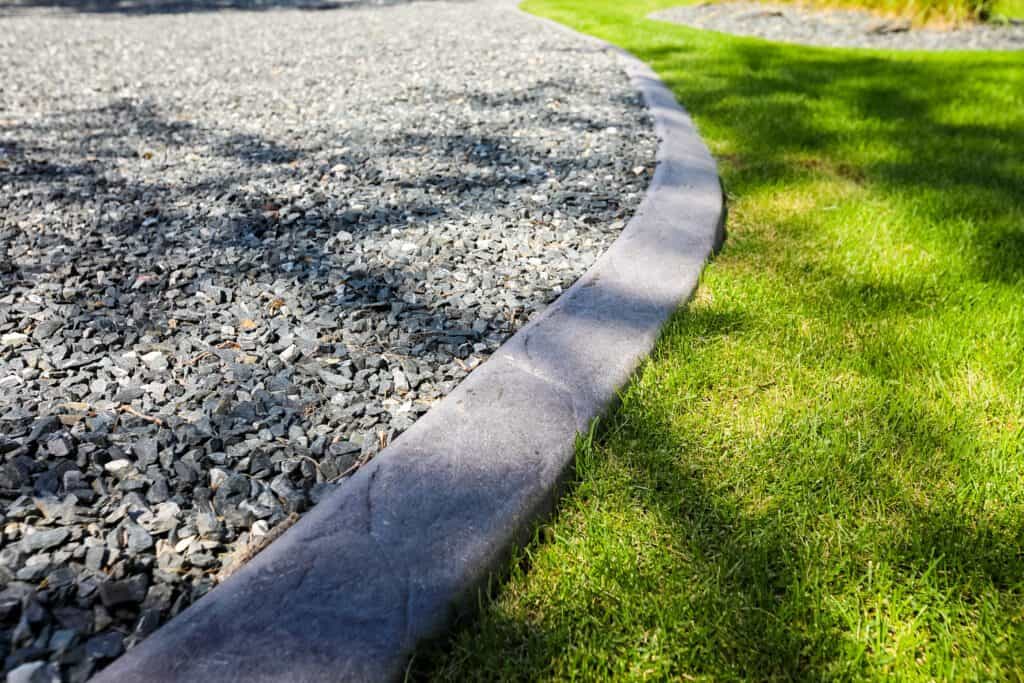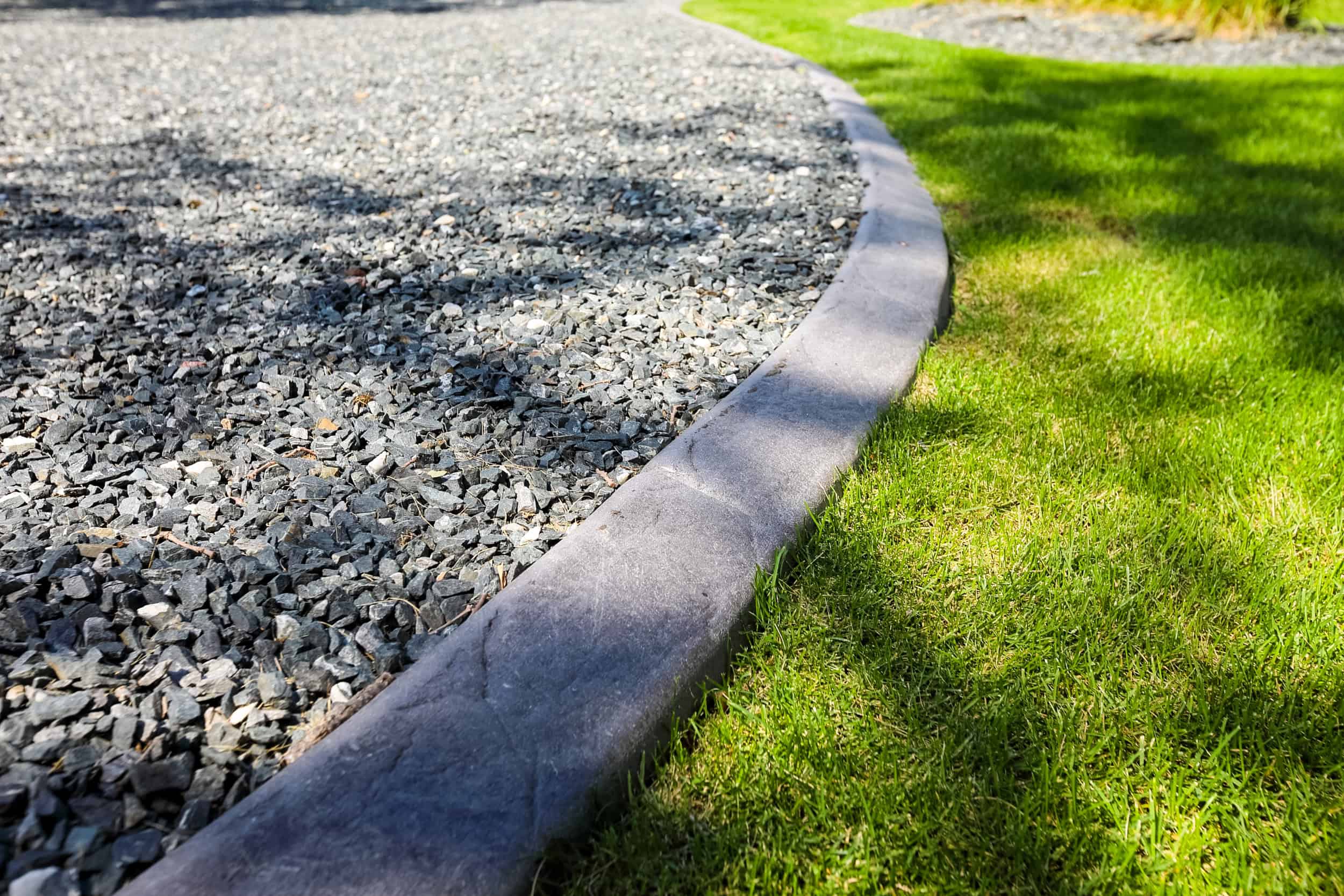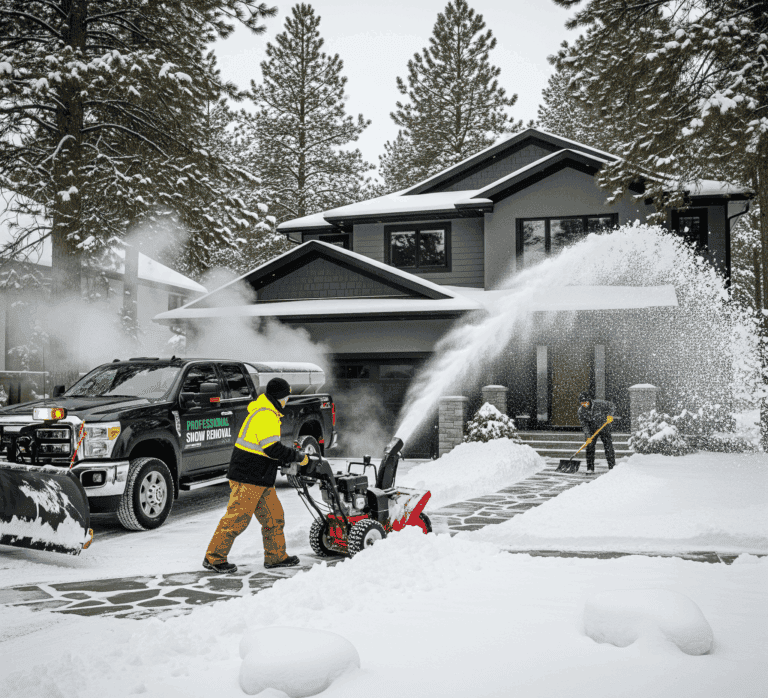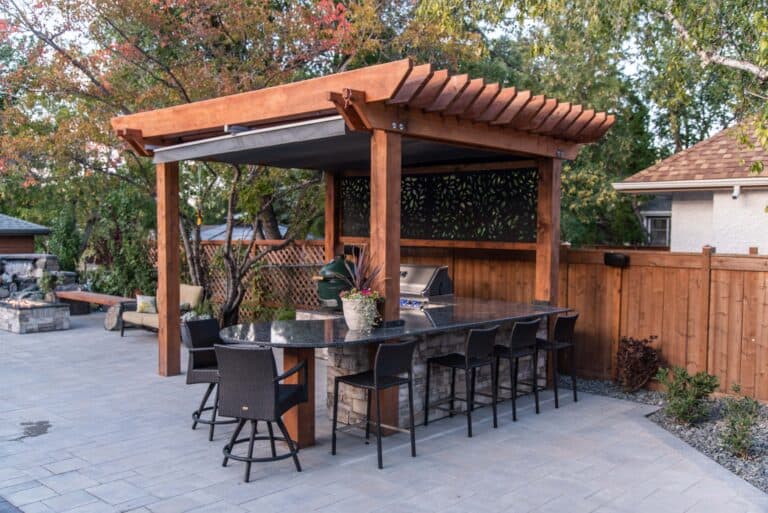Concrete Curbing Winnipeg: Understanding Its Role in Modern Landscaping
More Than Just a Border
When most homeowners think about landscape curbing, they picture a simple decorative border separating lawn from garden beds. In reality, concrete curbing serves as critical infrastructure that defines space, manages water flow, protects landscape investments, and creates structural integrity throughout your outdoor environment.

Quality curbing prevents soil erosion, eliminates mower damage to delicate plantings, contains mulch and decorative materials, and creates clean visual lines that organize landscape design. For Winnipeg properties facing extreme climate challenges, proper curbing becomes even more essential, protecting landscape investments while managing the intense moisture fluctuations our region experiences.
Understanding Curbing Types and Applications
Standard Extruded Curbing
Continuous pour concrete curbing represents the most common residential application. Specialized equipment extrudes concrete in continuous ribbons, creating seamless borders without joints every few feet. This continuous construction provides superior structural integrity compared to segmented alternatives.
Typical profiles include:
- Mower strip (4-6 inches wide): Flat surface allowing mower wheels to travel, eliminating trimming needs
- Vertical curb (6-8 inches height): Creates distinct separation between planting beds and turf areas
- Sloped curb: Gentle transition ideal for accessibility and equipment passage
The continuous installation method eliminates the weak points that segmented curbing creates, where joints become vulnerable to frost heave separation. According to the American Concrete Institute, monolithic curbing installations demonstrate 40% greater resistance to displacement compared to segmented alternatives in freeze-thaw climates.
Decorative and Stamped Curbing
Enhanced aesthetic options incorporate colour, texture, and pattern into functional curbing. Integral colour additives create curbing, matching or complementing hard-scape elements like patios and walkways. Stamping techniques imitate natural stone, brick, or custom patterns, delivering an upscale appearance at a fraction of natural material costs.
Decorative curbing particularly benefits front yard landscapes where visual impact affects property value and curb appeal. Research from many property analyst companies indicates that defined landscape borders increase perceived property maintenance quality by 20-40%, a significant factor in neighbourhood property values.
Commercial and Parking Curbing
Heavy-duty applications require thicker profiles (8-12 inches) with steel reinforcement supporting vehicle loads and impact. Parking lot curbing, loading zone borders, and commercial property perimeters demand engineering specifications that residential curbing doesn’t require.
These substantial installations incorporate deeper footings, typically 12-18 inches below grade, preventing the frost heave displacement that undermines lighter residential curbing. The Concrete Foundations Association recommends a minimum of 4,000 PSI concrete for commercial curbing applications, versus 3,000 PSI acceptable for residential use.
Design and Structural Considerations for Winnipeg’s Climate
Addressing Freeze-Thaw Challenges
Winnipeg experiences 50-70 freeze-thaw cycles annually, according to Environment Canada climate data, among the most demanding conditions for concrete installations in North America. This constant expansion and contraction create movement that destroys improperly designed curbing within just a few seasons.
Proper base preparation becomes critical. Minimum 4-inch compacted limestone base provides a stable foundation while managing drainage that prevents frost heave. The base must extend below the frost line or incorporate adequate depth to resist uplift forces from freezing soil expansion.
Control joints placed every 8-10 feet allow controlled concrete movement, preventing random cracking. These planned weak points concentrate stress, creating straight, manageable joints rather than irregular cracks compromising appearance and structural integrity.
Air entrainment in concrete mix creates microscopic air bubbles that accommodate freeze-thaw expansion within the concrete itself. The American Concrete Institute specifies 5-7% air content for exposed concrete in severe freeze-thaw environments, a standard often overlooked in inferior installations.
Drainage Pattern Integration
Curbing height and positioning directly affect landscape drainage performance. Too-tall curbing creates dams that trap water, while insufficient height allows mulch washout and fails to contain materials. Standard 6-inch height provides optimal balance for most residential applications.
Negative drainage (water trapped against foundations) represents the most serious design error. All curbing installations require proper slope, a minimum 2% grade, directing water away from structures toward designated drainage areas. Improperly graded curbing contributes to basement moisture issues and foundation damage over time.
Research from the National Research Council of Canada emphasizes that proper surface drainage prevents 80% of residential foundation moisture problems, making curbing position and grade critical elements in a whole-property water management strategy.
Hardscape Integration
Coordinated design ensures curbing complements rather than conflicts with driveways, walkways, and patios. Matching colour, texture, and profile creates visual continuity. Height coordination prevents awkward transitions and trip hazards between different hardscape elements.
Installation sequence matters: Curbing should typically be installed after major hardscape elements but before final grading and planting. This timing allows curbing to tie into existing structures while providing borders that guide final landscape finishing work.
Maintenance and Realistic Lifespan Expectations
Durability in Manitoba Conditions
Properly installed concrete curbing lasts 15-25 years in Winnipeg’s climate with minimal maintenance. This longevity depends entirely on quality installation, adequate base preparation, appropriate concrete mix, proper finishing, and timely sealing.
Inferior installations may fail within 3-5 years, developing cracks, displacement, or complete structural failure requiring removal and replacement. The initial cost difference between quality and budget installation proves insignificant compared to premature replacement expenses.
Protective Maintenance Protocols
Sealing applications every 2-3 years protect concrete from moisture infiltration and surface scaling. Quality penetrating sealers maintain natural appearance while preventing the freeze-thaw damage that concrete faces when water saturates the surface layer.
Winter precautions include avoiding salt application directly on curbing (use sand for traction instead) and cautioning snow removal operators to avoid direct equipment impact. Metal plow blades and aggressive snow blower augers cause chips and gouges that compromise structural integrity.
Seasonal inspection identifies developing cracks or separation before they progress. Small cracks sealed promptly with flexible concrete caulk prevent water infiltration that expands damage during freeze-thaw cycles.
Curbing in Contemporary Landscape Design
Creating Flow and Definition
Curved borders soften landscape geometry, creating organic flow that guides eye movement through garden spaces. Contemporary landscape design emphasizes these gentle curves over rigid straight lines; an aesthetic shift concrete curbing accommodates beautifully through extruded installation methods.
Research from the University of Illinois landscape architecture program demonstrates that curved borders increase perceived landscape size by 15-20% compared to geometric layouts, valuable perception for smaller urban properties.
Raised Bed Applications
Elevated planting areas benefit from curbing that doubles as bed retention wall. Stacked curbing profiles create raised borders 12-18 inches high, providing:
- Improved drainage for plant roots
- Reduced bending for gardening tasks
- Visual prominence for featured plantings
- Soil separation between different planting zones
These raised applications particularly benefit Manitoba gardens where improved drainage and earlier soil warming extend limited growing seasons.
Material Transition Zones
Strategic curbing placement creates clean transitions between turf, mulched beds, gravel areas, and hardscape surfaces. These defined borders eliminate the messy edges that occur when materials intermingle, maintaining the crisp appearance that characterizes professional landscape maintenance.
For properties incorporating multiple materials (lawn, decorative rock, wood mulch, groundcovers), curbing becomes organizational infrastructure preventing material migration while simplifying maintenance by clearly defining where each treatment applies.
Planning Curbing in Your Landscape Design
Early Design Integration
Curbing decisions should occur during initial landscape planning rather than as afterthoughts. Curbing location affects:
- Irrigation system layout and coverage
- Drainage patterns and grading requirements
- Planting bed dimensions and soil volumes
- Hardscape transitions and access points
Professional landscape designers incorporate curbing into conceptual plans, ensuring the borders enhance rather than compromise overall design function and aesthetic.
Budget Considerations
Concrete curbing costs typically range $12-15 per linear foot for standard profiles, $14-20 for decorative options. While representing significant line items in landscape budgets, curbing delivers value through:
- Permanent installation (no replacement like plastic or metal edging)
- Reduced maintenance (eliminated edge trimming and material containment)
- Enhanced appearance (professional definition elevating entire landscape)
- Functional benefits (drainage management and erosion prevention)
The 15–25-year lifespan means annual cost amounts to less than $1 per foot, exceptional value for infrastructure improving daily landscape enjoyment while protecting property investments.
Bringing Structure to Your Landscape Vision
Concrete curbing represents more than decorative borders, it’s structural infrastructure that organizes, protects, and enhances landscape functionality while creating the visual definition that distinguishes professional designs from amateur attempts. For Winnipeg properties facing extreme climate challenges, quality curbing becomes essential rather than optional.
Ready to explore how concrete curbing can enhance your Winnipeg landscape? Contact Lawn ‘N’ Order for expert consultation on curbing design, material selection, and professional installation that delivers lasting results through our challenging climate conditions.







